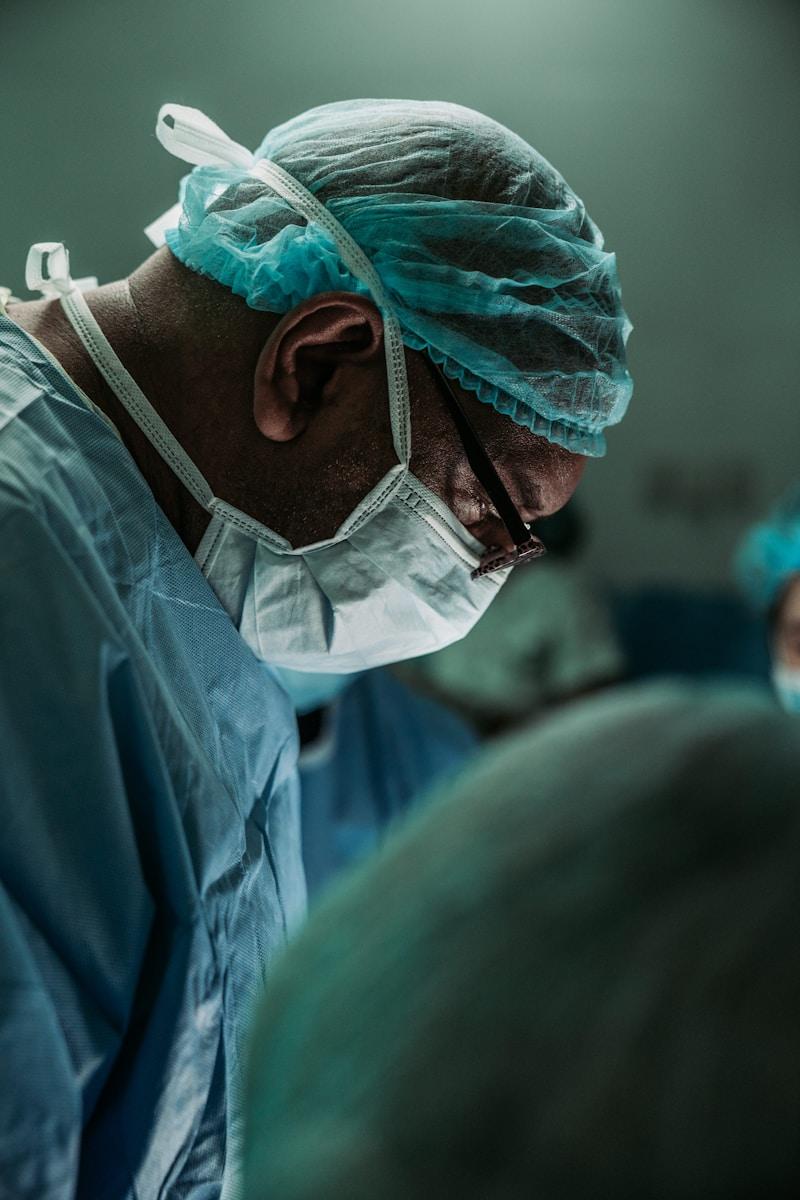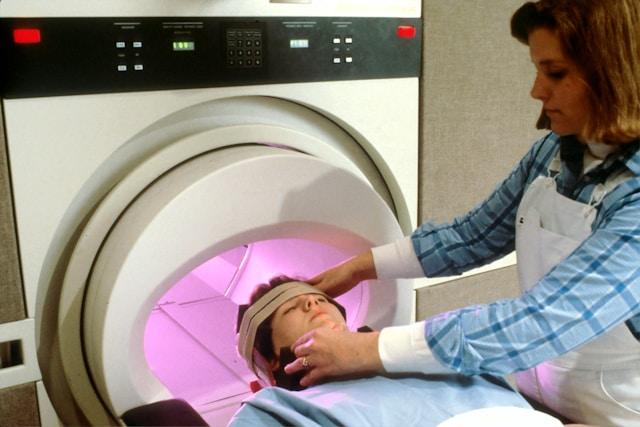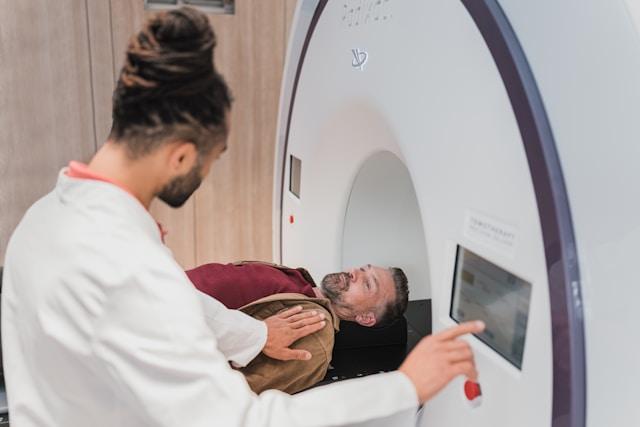-

Ilioinguinal Nerve Pain -
4. Diagnosis Techniques: From Physical Examination to Nerve Conduction Studies
-
5. The Connection Between Surgery and Ilioinguinal Nerve Pain
-
6. Non-Surgical Treatment Options: Medications and Physical Therapy
-
8. The Importance of Timely Treatment to Prevent Chronic Pain
If you’ve ever experienced sharp, shooting pain in your lower abdomen or groin area, chances are it might be linked to ilioinguinal nerve pain. This discomfort can be a real game-changer. In this listicle, we’ll dive into what exactly ilioinguinal nerve pain is, common causes that trigger it, symptoms to watch out for, effective treatment options available, and practical tips for managing the discomfort.
Curious to learn more about how to deal with this pesky nerve pain? Scroll down for insights and recommendations on alleviating ilioinguinal nerve pain so you can get back to feeling like your best self!
1. Definition and Role of the Ilioinguinal Nerve
The ilioinguinal nerve, stemming from the lumbar plexus, serves as a crucial sensory pathway for the lower abdomen, groin, and upper thigh regions. This nerve acts as a messenger, facilitating communication between these areas and the brain effectively.
-
Branch of Lumbar Plexus: The ilioinguinal nerve is intricately connected to this network of nerves originating from the lower back region.
-
Sensory Innervation: Responsible for providing sensation to key areas like the groin and upper thigh, highlighting its significance in bodily perception.
-
Transmitting Signals: Acting as a conduit for signals between vital regions such as the abdomen and brain, the inguinal region showcases its pivotal role in maintaining sensory functions.
Understanding how the inguinal nerve operates sheds light on its importance in ensuring proper communication between various parts of our body.
2. Common Causes of Ilioinguinal Nerve Pain
-
Hernias, particularly inguinal hernias, are a primary cause of ilioinguinal nerve pain as they can compress or irritate the nerve in the groin area.
-
Surgical interventions within the abdominal or pelvic regions have been known to inadvertently damage the ilioinguinal nerve, resulting in pain and discomfort for patients.
-
Trauma or injuries sustained in the lower abdomen or groin region can also trigger ilioinguinal nerve pain due to direct impact on the nerve pathways.
These common causes highlight how various factors such as anatomical issues like hernias, medical procedures, and physical trauma can all contribute to primary groin pain linked to ilioinguinal nerve complications. Understanding these underlying causes, such as groin pain, is crucial for accurate diagnosis and effective treatment strategies tailored to each patient’s specific condition.
3. Symptoms: From Burning Sensation to Muscle Weakness
Patients with ilioinguinal nerve pain commonly report a burning or shooting sensation in the lower abdomen or groin. This discomfort can be persistent and affect daily activities. Along the pathway of the nerve, individuals may also experience numbness or tingling sensations, indicating abnormal nerve function.
In addition to sensory symptoms, muscle weakness is another hallmark of ilioinguinal nerve pain. Specifically, patients might notice weakness in their hip flexors or inner thigh muscles and groin pain. This weakness can lead to difficulties in walking, climbing stairs, or performing tasks that require strength in these areas.
Understanding these symptoms is crucial for timely diagnosis and management of ilioinguinal nerve pain. Consulting a healthcare provider when experiencing groin pain or any combination of these signs can help determine the cause and appropriate treatment options tailored to each individual’s needs.
4. Diagnosis Techniques: From Physical Examination to Nerve Conduction Studies.
A physical examination is crucial in identifying tenderness or sensitivity along the ilioinguinal nerve’s path, aiding in pinpointing potential sources of pain.
Imaging tests such as ultrasound or MRI play a vital role in ruling out other underlying conditions that could be causing discomfort, ensuring an accurate diagnosis specific to ilioinguinal nerve issues and groin pain.
Nerve conduction studies provide detailed insights into the functionality and health of the ilioinguinal nerve, offering valuable data for healthcare professionals to determine appropriate treatment plans based on the nerve’s condition and groin pain.
These diagnostic approaches work together synergistically, enabling a comprehensive assessment that helps differentiate ilioinguinal nerve pain from other possible causes accurately.
5. The Connection Between Surgery and Ilioinguinal Nerve Pain
Surgery in the abdominal or pelvic region can inadvertently injure or compress the ilioinguinal nerve, leading to persistent groin pain post-operation. Scar tissue formation after surgery may exacerbate this issue by causing nerve irritation and subsequent pain in the inguinal area. This relationship between surgical procedures and ilioinguinal nerve pain highlights the importance of understanding potential complications that could arise following surgery.
Awareness of this connection is crucial for patients experiencing inguinal or groin pain and considering surgical interventions involving the abdominal wall or pelvic structures. By being informed about the risks associated with damage to the ilioinguinal nerve during surgery, individuals can engage in more meaningful discussions with their healthcare providers regarding pre-operative assessments, alternative treatment options, and post-operative care strategies tailored to mitigate potential nerve-related complications and groin pain.
Understanding how certain surgeries can impact the ilioinguinal nerve underscores the significance of comprehensive preoperative consultations where patients are educated about possible outcomes related to nerve injuries in these regions. This knowledge empowers individuals to make well-informed decisions regarding their healthcare journey while minimizing unforeseen challenges that may arise due to iatrogenic factors.
6. Non-Surgical Treatment Options: Medications and Physical Therapy
Over-the-counter pain medications like nonsteroidal anti-inflammatory drugs (NSAIDs) are effective in managing mild ilioinguinal nerve pain, offering relief from discomfort and inflammation. These medications work by reducing the production of prostaglandins, which are chemicals involved in the body’s inflammatory response.
Engaging in physical therapy exercises is a conservative measure that can significantly improve symptoms associated with ilioinguinal nerve pain. By targeting specific muscle groups around the affected area, physical therapy aims to enhance strength, flexibility, and overall stability. This approach not only aids in alleviating current discomfort but also helps prevent future recurrences of pain.
For individuals seeking immediate relief or diagnostic purposes, nerve blocks or injections of local anesthetics may be recommended as part of their treatment plan for ilioinguinal nerve pain. These injections can provide temporary numbing effects by blocking the transmission of pain signals along the affected nerves.
7. Surgical Interventions: When and Why They’re Considered
When conservative treatments fall short of providing relief, surgery becomes a viable option for ilioinguinal nerve pain. Procedures such as neurectomy involve the removal or decompression of the affected part of the ilioinguinal nerve. The primary goal of inguinal surgical interventions is to alleviate pain and reinstate normal function in the affected area.
Surgery is not typically the first line of treatment but rather a consideration when other methods have been exhausted. Neurectomy specifically targets the problematic section of the inguinal nerve, aiming to address the root cause directly. By surgically addressing the issue, patients may experience significant improvements in their symptoms and quality of life.
It’s crucial for individuals considering surgical interventions to consult with healthcare professionals specialized in managing ilioinguinal nerve pain. These experts can provide detailed insights into whether surgery is suitable based on individual circumstances and can offer guidance on what to expect during recovery post-surgery.
8. The Importance of Timely Treatment to Prevent Chronic Pain
Early intervention for ilioinguinal nerve pain is crucial in preventing the progression to chronic pain conditions. Addressing this condition promptly can significantly reduce the risk of long-term discomfort and complications associated with nerve damage.
By seeking timely medical attention from a pain specialist or doctor, patients can enhance their chances of achieving effective pain relief and improving their overall quality of life. This immediate action helps in managing symptoms efficiently and avoiding prolonged suffering due to untreated trauma or compression on the ilioinguinal nerve.
Delaying treatment for ilioinguinal nerve pain may result in persistent discomfort, impacting daily activities and diminishing one’s well-being over time. Individuals experiencing symptoms linked to this condition should prioritize early diagnosis and treatment to mitigate the risk of developing chronic pain issues that could affect their long-term health outcomes.
9. Lifestyle Adjustments for Managing Symptoms
Avoiding activities that worsen pain, such as heavy lifting or intense exercise, is crucial in symptom management. By steering clear of these triggers, individuals can prevent unnecessary strain on the ilioinguinal nerve.
Wearing supportive garments or belts offers an added layer of stability and helps alleviate pressure on the affected area. This simple adjustment can significantly reduce discomfort and promote healing.
Practicing good posture and proper body mechanics plays a vital role in minimizing stress on the ilioinguinal nerve. Maintaining correct alignment not only eases existing symptoms but also prevents future issues from arising.
These lifestyle modifications are essential components of a comprehensive approach to managing ilioinguinal nerve pain. Incorporating these adjustments into daily routines can lead to improved comfort levels and better overall quality of life for individuals dealing with this condition.
10. The Potential for Recovery and Long-Term Outlook
-
With proper treatment, many individuals see significant improvements in ilioinguinal nerve pain.
-
Recovery duration varies based on factors like the cause, symptom severity, and individual characteristics.
-
Long-term prospects are generally positive; however, ongoing management may be essential to prevent recurrences or flare-ups.
Closing Thoughts
You’ve delved into the intricate world of ilioinguinal nerve pain, understanding its origins, symptoms, diagnostic methods, and treatment options. By now, you grasp the importance of timely intervention and the impact surgery can have on your journey to recovery. Remember, knowledge is power. Arm yourself with information and take an active role in your healthcare decisions.
As you navigate the realm of ilioinguinal nerve pain, remember that each step forward, whether big or small, brings you closer to relief. Stay informed, seek support from healthcare professionals, and advocate for your well-being. Your path to healing may have its challenges, but with perseverance and a proactive approach, managing and overcoming ilioinguinal nerve pain is within reach.
Frequently Asked Questions
What are the main symptoms of ilioinguinal nerve pain?
Ilioinguinal nerve pain can manifest as a burning sensation, numbness, tingling, and muscle weakness in the groin area. These symptoms may worsen with movement or pressure on the affected area.
How is ilioinguinal nerve pain diagnosed?
Diagnosis involves a thorough physical examination by a healthcare provider to assess for sensitivity or motor deficits in the groin region. Nerve conduction studies may also be conducted to evaluate nerve function and pinpoint any abnormalities.
Are there non-surgical treatment options, such as conservative measures and inflammatory drugs, available for ilioinguinal nerve pain?
Yes, non-surgical treatments like medications (pain relievers, anti-inflammatories) and physical therapy can help manage symptoms effectively. These approaches aim to reduce inflammation, alleviate discomfort, and improve mobility without resorting to surgery.
When should surgical interventions be considered for ilioinguinal nerve pain?
Surgical interventions are typically considered when conservative treatments fail to provide relief or if there is an underlying structural issue causing the nerve compression. Your healthcare provider will assess your specific case to determine if surgery is necessary for long-term resolution.
Can lifestyle adjustments help in managing ilioinguinal nerve pain symptoms?
Absolutely! Lifestyle adjustments such as avoiding activities that exacerbate symptoms (like heavy lifting), maintaining good posture, engaging in low-impact exercises, and using supportive devices can all contribute to symptom management and overall well-being.






















